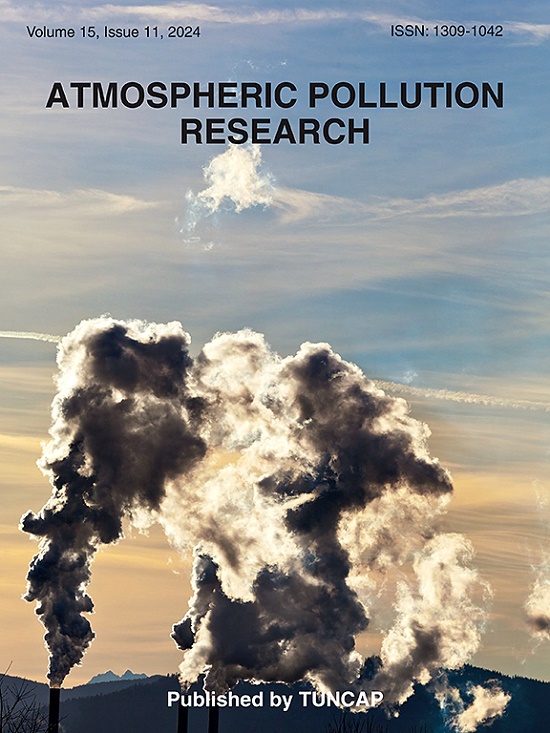The impact of different spatial sampling strategies on the spatial extrapolation prediction accuracy of PM2.5 concentrations in the Beijing-Tianjin-Hebei region, China
IF 3.5
3区 环境科学与生态学
Q2 ENVIRONMENTAL SCIENCES
引用次数: 0
Abstract
PM2.5 monitoring station networks play a critical role in retrieving ground-level PM2.5 concentrations using satellite remote sensing technology. However, the optimal spatial distribution of PM2.5 monitoring stations is frequently overlooked during satellite-based PM2.5 retrieval. Here, we employ the space-time linear mixed effects (STLME) model to assess the impact of different spatial sampling strategies on the spatial extrapolation prediction accuracy of PM2.5 concentrations in the Beijing-Tianjin-Hebei region in 2020. Results demonstrate that the all-station strategy (national + provincial stations) achieves superior performance, with station- and county/district-based CV-R2 values measuring 0.87 and 0.78 respectively, compared to the national-station strategy's corresponding values of 0.80 and 0.73. These findings suggest that both the all-station and national-station strategies generally reflect the model's spatial extrapolation prediction accuracy at the county and city scales. Furthermore, six strategies based on the all-station framework were developed through spatial stratified sampling strategy, demonstrating that strategic expansion of monitoring stations enhances model performance. However, model performance exhibits limited improvement when the number of stations exceeds 300. That indicate the all-station strategy can meet the estimation accuracy requirements for spatial extrapolation prediction models in this area. These findings suggest that the all-station strategy offers a relatively robust framework for PM2.5 extrapolation modeling in the BTH region, making it a preferred choice for supporting future air quality management and monitoring network optimization.
不同空间采样策略对京津冀地区PM2.5浓度空间外推预测精度的影响
PM2.5监测站网络在利用卫星遥感技术反演地面PM2.5浓度方面发挥着关键作用。然而,在基于卫星的PM2.5反演中,PM2.5监测站的最佳空间分布往往被忽略。本文采用时空线性混合效应(STLME)模型,评估不同空间采样策略对2020年京津冀地区PM2.5浓度空间外推预测精度的影响。结果表明,全站策略(国家+省级站点)的CV-R2值分别为0.87和0.78,而全国站点策略的CV-R2值分别为0.80和0.73。这些结果表明,无论是全站策略还是国家站策略,总体上反映了模型在县市尺度上的空间外推预测精度。此外,通过空间分层采样策略,提出了基于全站框架的6种策略,证明了监测站的战略扩展提高了模型的性能。然而,当站点数量超过300个时,模型性能的改善有限。这表明全站策略可以满足该地区空间外推预测模型的估计精度要求。这些结果表明,全站策略为北京地区的PM2.5外推模型提供了一个相对稳健的框架,使其成为支持未来空气质量管理和监测网络优化的首选策略。
本文章由计算机程序翻译,如有差异,请以英文原文为准。
求助全文
约1分钟内获得全文
求助全文
来源期刊

Atmospheric Pollution Research
ENVIRONMENTAL SCIENCES-
CiteScore
8.30
自引率
6.70%
发文量
256
审稿时长
36 days
期刊介绍:
Atmospheric Pollution Research (APR) is an international journal designed for the publication of articles on air pollution. Papers should present novel experimental results, theory and modeling of air pollution on local, regional, or global scales. Areas covered are research on inorganic, organic, and persistent organic air pollutants, air quality monitoring, air quality management, atmospheric dispersion and transport, air-surface (soil, water, and vegetation) exchange of pollutants, dry and wet deposition, indoor air quality, exposure assessment, health effects, satellite measurements, natural emissions, atmospheric chemistry, greenhouse gases, and effects on climate change.
 求助内容:
求助内容: 应助结果提醒方式:
应助结果提醒方式:


